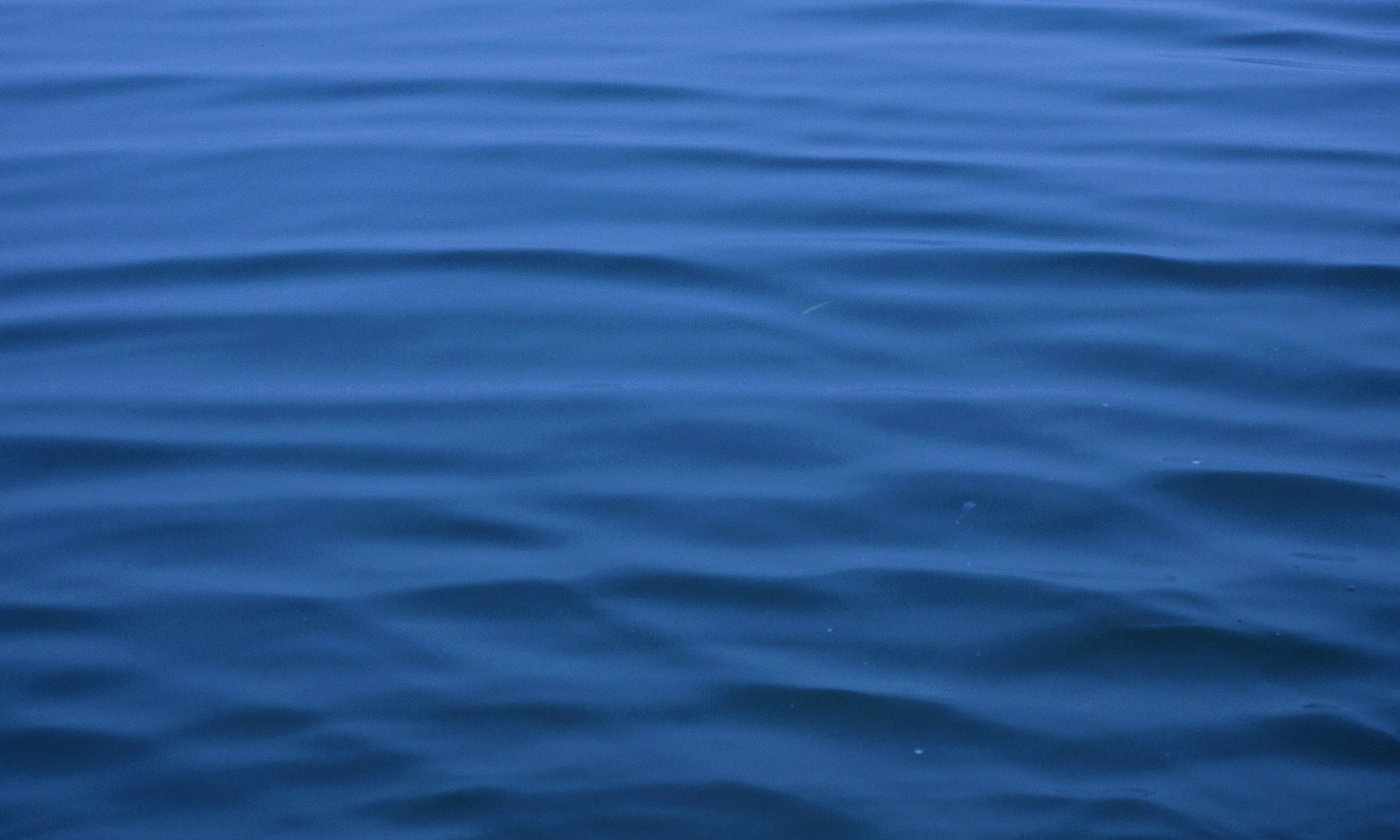The objective of this study is to collect and analyze demographic information for Walleye, Sauger, and their hybrids throughout Illinois to determine population abundance and age structure.
Recreational sport fishing in inland waters is a major economic driver in Illinois, requiring significant effort to conduct surveys and inventories to monitor the status of the cool water sport fish community. Currently, age determination of Walleye, Sauger, and Saugeye is lacking, limiting the interpretation of data analyses intended to inform sustainable management of cool water species in Illinois. Beginning in 2015, in collaboration with the Illinois DNR, the collection of data on sport fish populations via boat electroshocking, fyke netting, and gill netting have been conducted at regular intervals throughout the spring, summer and fall.
In the field, fish are measured in total length (mm) and weighed to the nearest gram (g). The second dorsal fin ray is removed for age estimation, and a subsample of fish from each lake are sacrificed and brought back to the laboratory for otolith extraction, tissue sampling, and gender identification.
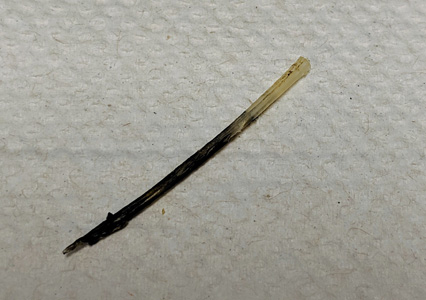
Dorsal fin spines are processed following the methods of Koch and Neely (2017) to estimate age. Fin rays are cleaned of excess tissue (Figure A) and the most proximal end is sanded with 600 grit sandpaper, ensuring a readable cross-section for subsequent aging. The cross-sections of the fin rays are illuminated by a fiber optic light (Figure B) and examined under a dissection microscope (Figure C: Age 2 Saugeye from Weldon Spring Lake).

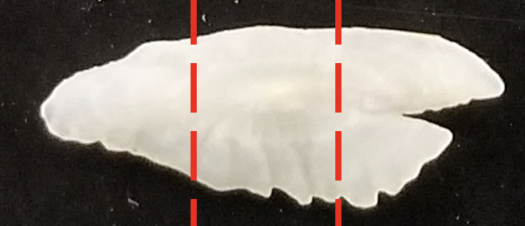
Otoliths are cleaned of excess tissue then set in epoxy resin molds and let dry for at least 24 hours. The focus of the nucleus was isolated by making two transverse cuts with a Buhler Isomet Low Speed Saw to remove the anterior and posterior ends (red dotted lines in Figure D at right). The remaining transverse section that includes the focus is then adhered to a microscope slide using superglue (Figure E) and sanded with 600 grit sandpaper to view annuli under a dissection microscope (Figure F: Age 4 Saugeye from Lake Charleston Side Channel).
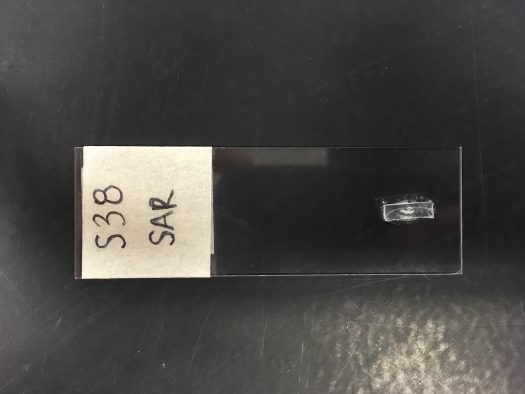
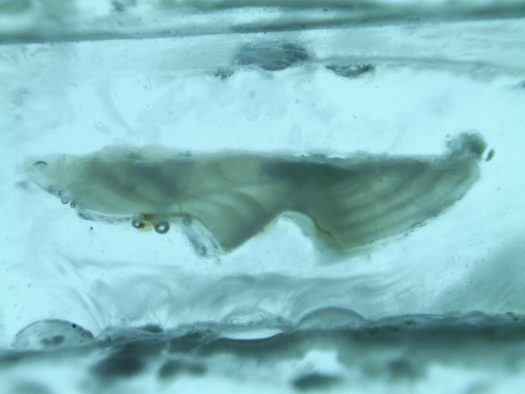
Data collection is ongoing and calcified structures are being processed and aged in the laboratory.
